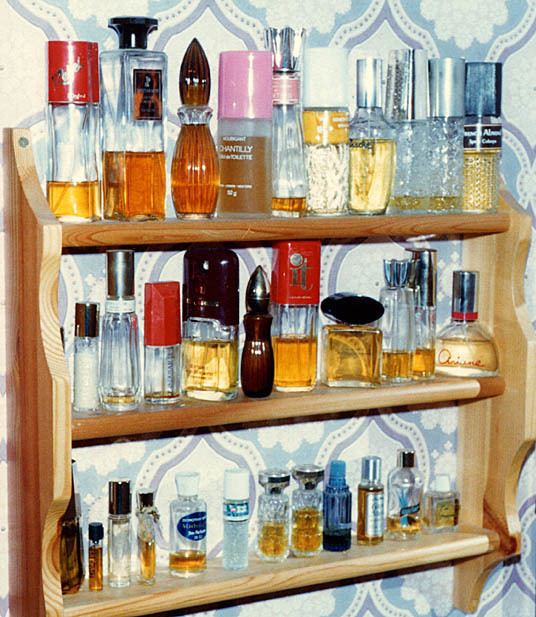 | ||
An aroma-compound, also known as an odorant, aroma, fragrance, or flavor, is a chemical compound that has a smell or odor. A chemical-compound has a smell or odor when it is sufficiently volatile to be transported to the olfactory system in the upper-part of the nose.
Contents
- Cyclic terpenes
- Alcohols
- Aldehydes
- Esters
- Ketones
- Lactones
- Thiols
- Miscellaneous compounds
- Aroma compound receptors
- Safety
- List of chemicals used as fragrances
- References
Generally molecules meeting this specification have molecular weights of <300. Flavors affect both the sense of taste and smell, whereas fragrances affect only smell. Flavors tend to be naturally occurring, and fragrances tend to be synthetic.
Aroma-compounds can be found in food, wine, spices, floral scent, perfumes, fragrance oils, and essential oils. For example, many form biochemically during the ripening of fruits and other crops. In wines, most form as byproducts of fermentation. Also, many of the aroma-compounds play a significant role in the production of flavorants, which are used in the food-service industry to flavor, improve, and generally increase the appeal of their products.
An odorizer may add an odorant to a dangerous odorless substance, like propane, natural gas, or hydrogen, as a safety measure.
Cyclic-terpenes
Note: Carvone, depending on its chirality, offers two different smells.
Alcohols
Aldehydes
High concentrations of aldehydes tend to be very pungent and overwhelming, but low concentrations can evoke a wide range of aromas.
Esters
Ketones
Lactones
Thiols
Miscellaneous-compounds
Aroma-compound receptors
Animals that are capable of smell detect aroma-compounds with their olfactory receptors. Olfactory-receptors are cell-membrane receptors on the surface of sensory neurons in the olfactory system that detect air-borne, aroma-compounds.
In mammals, olfactory-receptors are expressed on the surface of the olfactory- epithelium in the nasal cavity.
Safety
In 2005–06, fragrance-mix was the third-most-prevalent allergen in patch tests (11.5%).
'Fragrance' was voted Allergen of the Year in 2007 by the American Contact Dermatitis Society. The composition of fragrances is usually not disclosed in the label of products, hiding the actual chemicals of the formula, which raises concerns among some consumers.
Fragrances are regulated in the United States by the Toxic Substances Control Act of 1976 that "grandfathered" existing-chemicals without further review or testing and put the burden of proof that a new substance is not safe on the EPA. The EPA, however, does not conduct independent-safety testing but relies on data provided by the manufacturer.
List of chemicals used as fragrances
In 2010 the International Fragrance Association published a list of 3,059 chemicals used in 2011 based on a voluntary-survey of its members. It was estimated to represent about 90% of the world's production-volume of fragrances.
